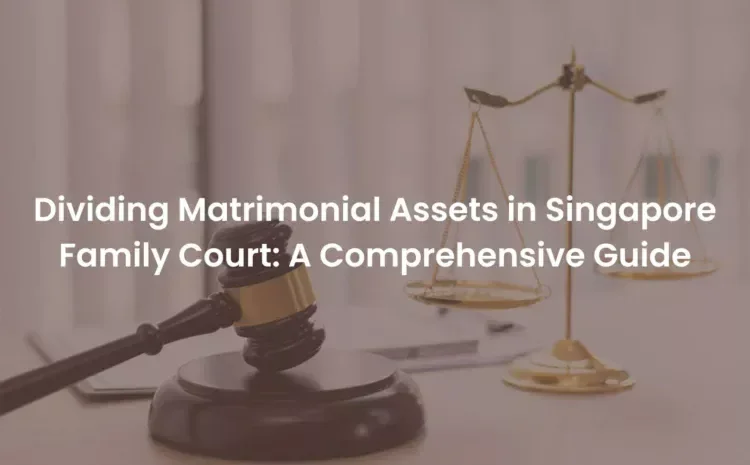Dividing Matrimonial Assets in Singapore Family Court: A Comprehensive Guide
Introduction:
Divorce can be a challenging and emotionally charged process, especially when it comes to dividing matrimonial assets. In Singapore, the division of assets during divorce is governed by a well-established legal framework. This article will provide you with a comprehensive guide on how the Singapore Family Court divides matrimonial assets.
Understanding Matrimonial Assets:
Matrimonial assets include all properties acquired during the marriage, regardless of whether they are held in the name of one or both spouses. These assets can range from real estate and investments to personal possessions, savings, and even retirement funds. It’s essential to establish the full scope of these assets before proceeding with the division.
Legal Principles for Division:
The guiding principle in Singapore’s approach to dividing matrimonial assets is fairness. The court aims to achieve a just and equitable division based on various factors, including:
Contributions: The court considers each spouse’s financial and non-financial contributions to the marriage, such as homemaking and caregiving, when assessing how assets should be divided.
Future Needs: The court takes into account the future needs of each spouse, particularly if one spouse requires more financial support due to factors like age, health, or earning capacity.
Children’s Welfare: The welfare of any dependent children is a significant factor. The court ensures that the division of assets supports their well-being.
Duration of Marriage: The length of the marriage is considered. Longer marriages may result in a more equal distribution of assets.
Debts and Liabilities: Outstanding debts and liabilities are also taken into account when calculating the net value of matrimonial assets.
Process of Division:
Identifying Matrimonial Assets: Both spouses must provide full disclosure of all assets, liabilities, income, and expenses. This includes documentation such as bank statements, property valuations, and financial statements.
Valuation: Assets are assessed for their current market value. Professional valuations may be required for complex assets like businesses or unique properties.
Negotiation or Mediation: Spouses are encouraged to reach an agreement on the division of assets through negotiation or mediation. An amicable settlement can save time and legal fees.
Court Decision: If an agreement cannot be reached, the court will step in to make a decision. The court’s objective is to ensure a fair and just division based on the principles mentioned earlier.
Splitting the Assets:
The court can adopt various methods to divide assets, including:
Equal Division: In many cases, an equal division of assets is deemed fair. Each spouse receives an equal share.
Unequal Division: Depending on the circumstances, an unequal division may be ordered to account for contributions, future needs, and other relevant factors.
Sale of Assets: Sometimes, the court may order the sale of certain assets, with the proceeds divided between the spouses.
Maintenance Orders: In some instances, the court may order one spouse to make periodic payments (maintenance) to the other instead of or in addition to dividing assets.
Conclusion:
Dividing matrimonial assets in the Singapore Family Court is a meticulous and well-thought-out process. The court strives to ensure that the division is just and equitable, taking into account each spouse’s contributions, future needs, and the welfare of any dependent children. While an amicable settlement is preferred, the court is prepared to step in when necessary to ensure a fair outcome for both parties. Seeking legal advice is crucial to navigate this complex process successfully.

